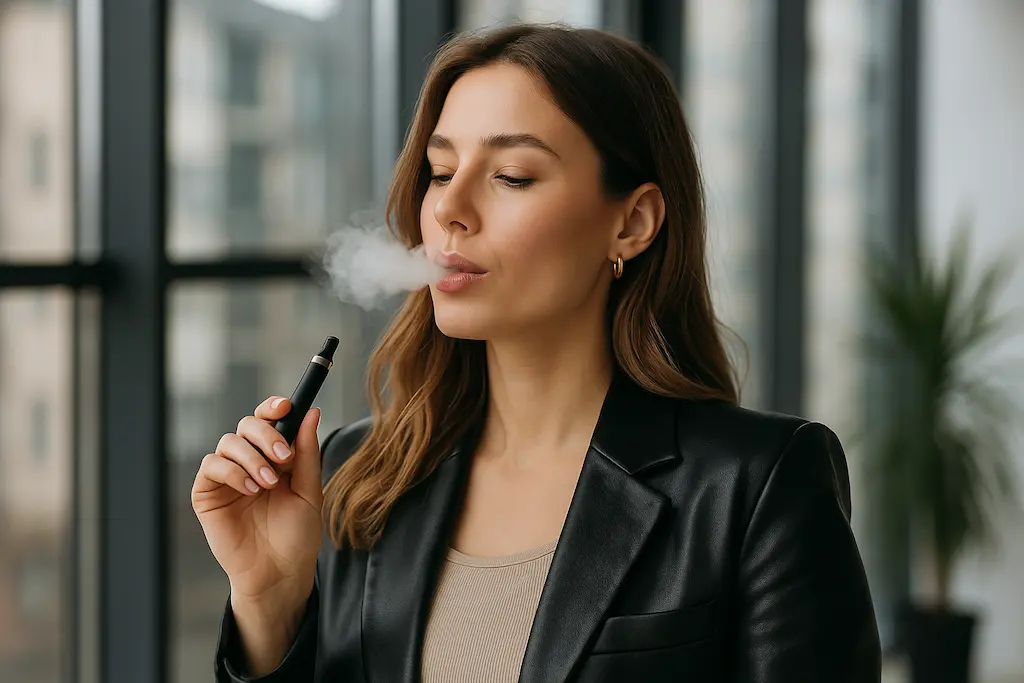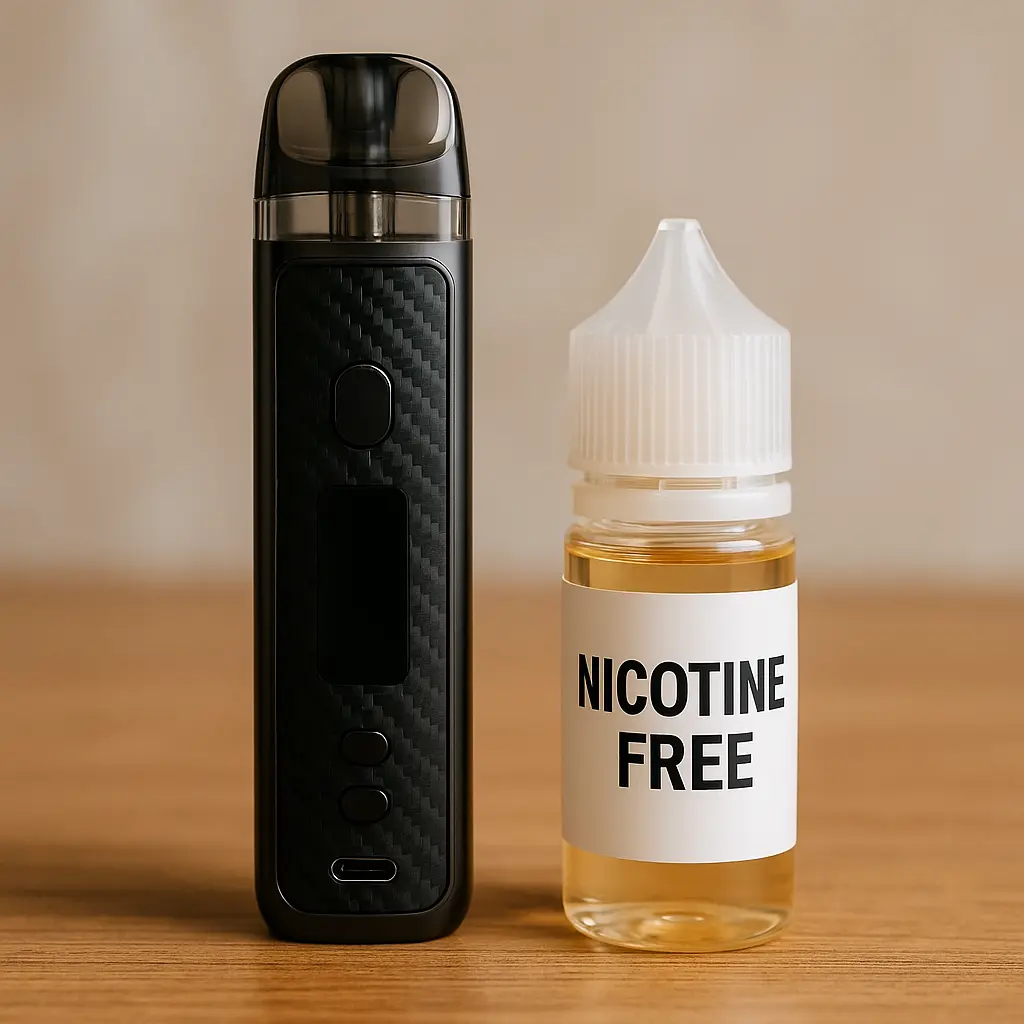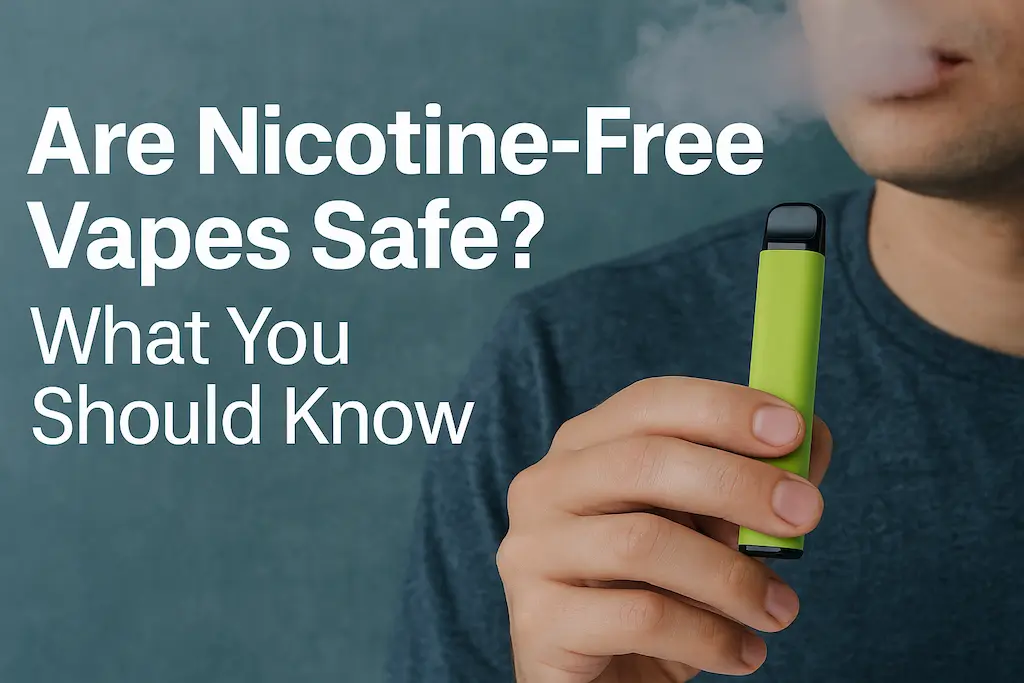If you’ve switched to a nicotine-free vape thinking it’s completely safe, you’re not alone. Many people assume that removing nicotine from a vape monouso o penna per vape means zero risk — but that’s not entirely true.
Nicotine-free or 0-nicotine vapes may reduce addiction, yet they still involve inhaling vaporized chemicals. Let’s take a closer look at what “nicotine-free” really means, how it affects your body, and how to vape safely.
What Exactly Is a Nicotine-Free Vape?
A nicotine-free vape (also called a zero-nicotine vape o non-nicotine vape) uses e-liquid without nicotine, but the structure is the same as a regular disposable.
The juice is made of:
- Propylene Glycol (PG) – creates the throat hit
- Vegetable Glycerin (VG) – produces vapor clouds
- Flavorings – add taste (fruity, minty, dessert, etc.)
Some brands market these as healthy vapes o water vapes, but in reality, you’re still inhaling aerosol — not pure water vapor.
Secondo Notizie mediche di oggi, even nicotine-free vapes can still expose your lungs to small amounts of harmful particles and flavoring chemicals when heated.

Why Do People Vape Without Nicotine?
People use no-nicotine vapes o non-nicotine disposables for different reasons:
- To quit smoking or nicotine gradually, use vapes monouso senza nicotina.
- To reduce stress or anxiety (vaping without nicotine for relaxation).
- For flavor enjoyment, many users love fruity or icy vapes with no nicotine.
- For social vaping without addiction risk.
- To avoid dependency while keeping the hand-to-mouth ritual.
Whatever the reason, nicotine-free vapes appeal to those who want the vaping experience without the chemical addiction.
Are Nicotine-Free Vapes Safe?
That’s the big question — are nicotine-free vapes safe?
The short answer: safer, but not entirely safe.
Even without nicotine, there are still health considerations:
1. Heating Chemicals
When PG and VG are overheated, they can form formaldehyde e acetaldehyde — both irritants.
Low-quality vapes monouso with poor coils may increase this risk.
A 2019 study from Penn Medicine found that even nicotine-free e-cigarettes can impair blood vessel function due to chemical byproducts in vapor.
2. Flavoring Risks
Even non-nicotine vapes use flavoring compounds. Some, like diacetyl, are safe for eating but harmful to inhale.
3. Throat and Lung Irritation
Users often report dry mouth, coughing, o sore throat, especially when chain vaping.
4. Questionable Materials
Some cheap 0-nic vapes or no-nicotine e-cigs may contain metals o synthetic additives. Always choose reputable, lab-tested brands.
✅ In conclusione:
A nicotine-free disposable vape removes addiction, but it’s still not free of chemical exposure.
Nicotine vs. Nicotine-Free Vapes
| Aspetto | Nicotine Vape | Nicotine-Free Vape |
|---|---|---|
| Addiction | High | Nessuno |
| Health Impact | Dependence, craving | Mild irritation, dry throat |
| Throat Hit | Strong | Soft |
| Opzioni di gusto | Tobacco, mint | Fruity, dessert, herbal |
| Il migliore per | Smokers | Non-smokers, quitters |
If you want to reduce risk and move away from dependency, nicotine-free vapes are a safer bridge — but they’re not risk-free.

Può Nicotine-Free Vaping Help You Quit Smoking?
Yes. Many ex-smokers use 0 nicotine disposable vapes as a transition tool to quit gradually.
The act of inhaling vapor satisfies oral fixation and reduces cravings without nicotine.
But there’s a catch — you can still become habit-dependent.
To fully quit, combine vaping with:
- Behavioral therapy or support groups
- Nicotine replacement (patches, gums) if needed
- Gradual reduction from high-nicotine to non-nicotine vapes
As explained by NCBI, nicotine-free vaping can support smoking cessation, but users should remain cautious due to limited long-term data.
Common Side Effects of Non-Nicotine Vaping
You might still experience:
- Dry mouth or mild throat burn
- Dizziness after chain vaping
- Slight nausea if the vapor is overheated
- Reduced taste sensitivity over time
These are temporary, but frequent overuse can irritate your airways — even without nicotine.
Safety Tips for Nicotine-Free Vaping
- Buy from verified brands — look for ingredient transparency.
- Don’t chain vape — let your coil cool to avoid dry hits.
- Store properly — keep your vape away from heat or sunlight.
- Check airflow — clogged vents can cause uneven heating.
- Stay hydrated — vapor can dry your throat.
- Replace when flavor fades — old coils may produce a burnt or metallic taste.
For a broader view on vaping and its health effects, check the CDC’s guide on e-cigarettes, which notes that even nicotine-free vapor contains fine particles and volatile compounds.
What Experts Say About Nicotine-Free Vaping
- Public Health England: vaping is less harmful than smoking, but not harmless.
- CDC: Even 0 nicotine vapes emit ultrafine particles and flavoring chemicals.
- Johns Hopkins Medicine: There’s limited long-term data, so caution is advised.
In breve: 0 nicotine vapes reduce addiction risk but not chemical exposure.
FAQs About Nicotine-Free Vapes
Q1: Are nicotine-free vapes addictive?
No. But you can still develop a psychological habit from repeated use.
Q2: Are 0 nicotine vapes safe for your lungs?
They’re safer than nicotine vapes but still contain PG, VG, and flavoring aerosols that can irritate airways.
Q3: Do nicotine-free vapes help relieve stress?
Many people say vaping without nicotine helps them relax, but it’s a behavioral comfort — not a medical treatment.
Q4: Do non-nicotine vapes have flavor?
Yes. Most vapes with no nicotine come in sweet or minty flavors, just without nicotine.
Q5: What is the best nicotine-free vape?
Choose lab-tested, reputable brands. Avoid cheap imports or unknown 0 NIC devices.
